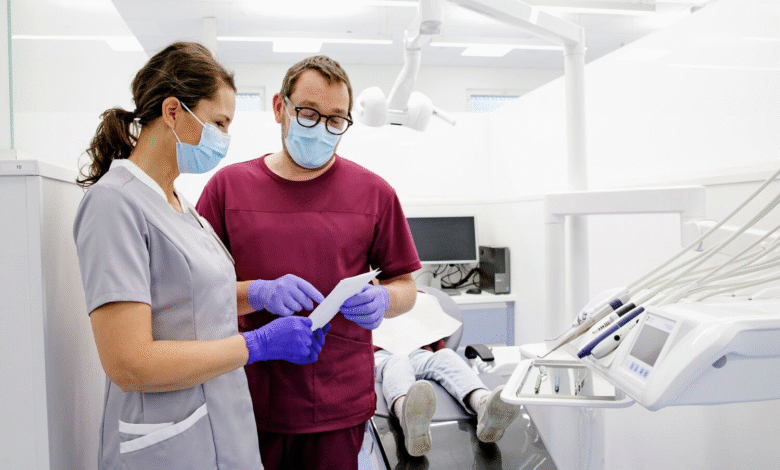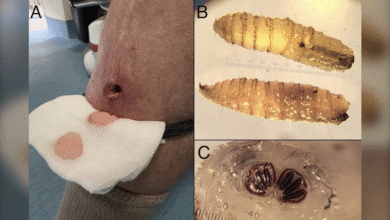Laundering Healthcare Uniforms: A Risk of Spreading Superbugs

Laundering healthcare uniforms is a crucial task that carries significant implications for infection control in healthcare settings. A recent study indicates that washing these vital garments at home may unintentionally contribute to the spread of superbugs and antibiotic-resistant bacteria. Many healthcare professionals remain unaware that home washing machines can fail to adequately disinfect uniforms, even when using high temperatures. This raises serious concerns about healthcare uniforms hygiene and the potential for persistent pathogens to lurk in everyday laundry. The findings underscore the need for stricter guidelines on laundering healthcare clothing to protect both workers and patients from harmful infections.
The act of cleaning healthcare attire is essential to maintaining safety and preventing the transmission of infections. This process, often overlooked, is vital not only for healthcare workers but also for the welfare of patients they serve. Recent findings reveal that washing these critical fabrics in domestic machines may not effectively eliminate harmful microorganisms, leading to a heightened risk of infections. Terms like “healthcare laundry management” and “textile decontamination” are now becoming more prominent as institutions seek safer laundering solutions. Addressing these laundering challenges could revolutionize standards of cleanliness and safety in healthcare environments.
The Risks of Laundering Healthcare Uniforms at Home
Laundering healthcare uniforms at home is increasingly being scrutinized due to the potential risks involved, particularly with the spread of superbugs. Studies indicate that when healthcare professionals wash their uniforms in domestic washing machines, harmful bacteria, including antibiotic-resistant strains, may not be adequately removed. This poses significant challenges for infection control in healthcare, as these resistant bacteria can potentially spread from the uniforms into the home and the community. The reliability of home machines is called into question, with many failing to reach the necessary temperatures and cleaning efficacy to ensure the thorough disinfection of healthcare textiles.
The findings highlight a growing concern that washing healthcare uniforms at home may inadvertently contribute to the rise of superbugs in communities. Many healthcare workers may be unaware that their washing practices could foster an environment conducive to the survival of antibiotic-resistant bacteria. The study found that even with proper washing techniques, domestic laundries often do not meet the hygiene standards necessary for healthcare textiles, echoing the need for improved infection control either through professional laundering services or stringent guidelines in home washing routines.
Why Home Washing Machines Are a Source of Concern for Healthcare Workers
Home washing machines are equipped with limitations that can endanger the hygiene of healthcare uniforms. Research points to deficiencies in standard laundry cycles, with many machines failing to achieve proper disinfection levels. For example, the study revealed that half of the tested machines did not adequately clean during rapid cycles, and a third struggled even during longer, standard cycles. This means that healthcare workers might not be aware of how their hygiene efforts might be undermined by their domestic laundering practices, allowing pathogenic bacteria to survive and thrive on their uniforms.
Moreover, home washing machines can act as breeding grounds for superbugs if not maintained properly. Without regular upkeep, such as monthly disinfecting washes, machines may harbor residual bacteria that can contaminate future loads. The study suggests that standard detergents used in domestic settings may not sufficiently combat these antibiotic-resistant strains. Hence, healthcare workers believing they are practicing good hygiene might unintentionally contribute to the proliferation of resistant bacteria, raising broader public health concerns.
Frequently Asked Questions
What are the risks of laundering healthcare uniforms at home?
Laundering healthcare uniforms at home poses significant risks, including the potential spread of superbugs and antibiotic-resistant bacteria. A study revealed that home washing machines often fail to effectively eliminate harmful microorganisms, which can lead to infection control issues both in community and healthcare settings.
How do home washing machines contribute to the spread of superbugs in laundry?
Home washing machines can inadvertently spread superbugs in laundry because many domestic machines do not reach the necessary temperatures or utilize disinfecting cycles required to safely clean healthcare uniforms. This allows antibiotic-resistant bacteria to survive and potentially spread to other fabrics, increasing hygiene risks.
Are home washing machine settings sufficient for healthcare uniforms hygiene?
The findings of recent research suggest that home washing machine settings may not be sufficient for healthcare uniforms hygiene. Many machines failed to reach the disinfecting temperatures of 140 degrees Fahrenheit or more, making them inadequate for effectively removing pathogenic bacteria associated with healthcare work.
What precautions should healthcare workers take when laundering their uniforms at home?
Healthcare workers should strictly follow laundering guidelines, including using high temperatures and appropriate detergents. Furthermore, it may be advisable to clean washing machines regularly with disinfectants and perform empty cycles at high temperatures to mitigate the risks of antibiotic-resistant bacteria.
What alternatives to home laundry exist for healthcare uniforms?
Alternatives to home laundry for healthcare uniforms include implementing standardized in-house laundering within healthcare facilities or utilizing professional industrial laundries. These methods are more effective in ensuring that uniforms are thoroughly cleaned and disinfected, thus enhancing infection control measures.
Why is infection control in healthcare important regarding uniform laundering?
Infection control in healthcare is crucial because healthcare uniforms can harbor pathogenic bacteria, including superbugs. Effective laundering practices are integral to preventing the spread of these infectious agents, thereby protecting both healthcare workers and patients from potential health risks associated with antibiotic resistance.
What temperature should be used for effectively laundering healthcare uniforms?
To effectively launder healthcare uniforms and ensure hygiene, temperatures of at least 140 degrees Fahrenheit are recommended. However, even higher temperatures, such as 194 degrees Fahrenheit, may be needed for certain disinfecting cycles to thoroughly remove harmful bacteria.
Can using regular laundry detergents help in disinfecting healthcare uniforms?
While regular laundry detergents can aid in cleaning, they may not be sufficient in disinfecting healthcare uniforms alone. It is advisable to use specialized detergents or additives designed for disinfection to address the presence of antibiotic-resistant bacteria effectively.
What should healthcare facilities do to improve uniform laundering safety?
Healthcare facilities should reassess their laundering policies to minimize the risks associated with home washing. This includes providing on-site laundering services or partnering with external laundries that adhere to stringent disinfection standards necessary for healthcare textiles.
How can public education influence healthcare uniforms hygiene and laundering practices?
Public education on antimicrobial resistance and proper hygiene practices can significantly impact healthcare uniforms hygiene and laundering practices. By raising awareness of the risks associated with home laundering, healthcare workers can be encouraged to adopt safer laundering methods and advocate for institutional changes that enhance infection control.
| Key Point | Description |
|---|---|
| Risk of Superbugs | Home washing may not eliminate harmful bacteria, leading to the spread of antibiotic-resistant bacteria. |
| Study Findings | Many home washing machines fail to disinfect healthcare uniforms, even on hot settings. |
| Recommendations for Healthcare Workers | Healthcare professionals should reconsider washing their uniforms at home and may need standardized laundering protocols within healthcare facilities. |
| Creating Superbugs | Domestic detergents and improper washing practices could contribute to developing antibiotic-resistant bacteria strains. |
| Laundering Guidelines | Health workers should strictly follow guidelines for temperature and detergents to minimize risks. |
Summary
Laundering healthcare uniforms properly is crucial to prevent the spread of superbugs, a significant concern highlighted by a recent study. Healthcare professionals who wash their uniforms at home may inadvertently contribute to the spread of antibiotic-resistant bacteria due to ineffective washing practices. This study indicates that many home washing machines do not adequately disinfect healthcare textiles, emphasizing the need for healthcare providers to reconsider their laundering habits and adopt industry-standard practices. Implementing professional laundering solutions not only enhances infection control but also ensures a safer environment for both healthcare workers and patients. Adhering to recommended washing guidelines is imperative in mitigating the risks associated with antimicrobial resistance.




